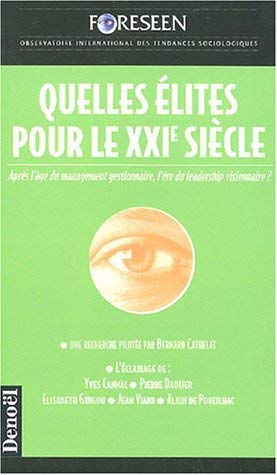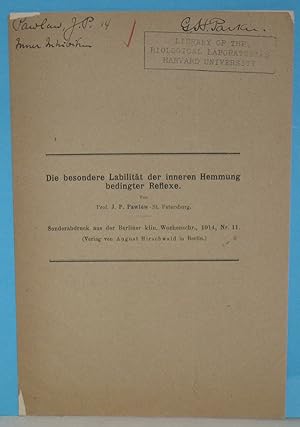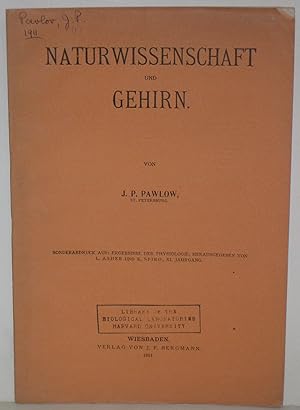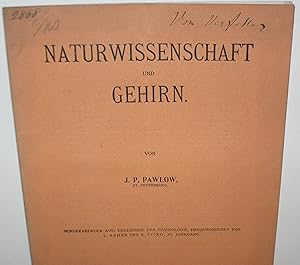Pawlow, J P Pavlov, Ivan (5 results)
Product Type
- All Product Types
- Books (5)
- Magazines & Periodicals
- Comics
- Sheet Music
- Art, Prints & Posters
- Photographs
- Maps
-
Manuscripts &
Paper Collectibles
Condition
- All Conditions
- New
- Used
Binding
Collectible Attributes
- First Edition (1)
- Signed (1)
- Dust Jacket (1)
- Seller-Supplied Images (3)
- Not Printed On Demand
Seller Location
Seller Rating
-
THE WORK OF THE DIGESTIVE GLANDS
Published by Oxford Historical Books, Abingdon, England, 1994
ISBN 10: 1871395046ISBN 13: 9781871395044
Seller: Cornerstone Books, Santa Ana, CA, U.S.A.
Book
Cloth. Condition: As New. Dust Jacket Condition: Fine. This copy is a facsimile of the first English edition 1902. First published in Russian, the translation into English was done by W. H. Thompson. This work is of great importance and details the results of Pavlov's experimental investigation into the digestive system. These chapters were delivered as lectures to an audience of men in the Institute for Experimental Medicine of which he was the Director (St. Petersburg). The results of ten years of research on the digestive glands are presented here along with charts and graphs. This work also includes a bibliography and an index. This copy is like new, clean and tight, and has a classic dust jacket framing a photograph of the author. When published in 1902, this work was "recognised by physiological investigators all the world over." A beautiful copy!.
-
The Work of the Digestive Glands. Lectures by. Translated by W. H. THOMPSON.
Published by Charles Griffin. London First English edition, 1902
Seller: Patrick Pollak Rare Books ABA ILAB, SOUTH BRENT, DEVON, United Kingdom
pp. xii, 196, 36 catalogue [dated 17.9.02]. 19 text figures. Original cloth, spine torn at the foot with a little loss, some rubbing of edges and corners, a little slack. *GARRISON-MORTON 1022: 'Pavlov made perhaps the greatest contribution to our knowledge of the physiology of digestion. Especially notable was his method of producing gastric and pancreatic fistulae for the purpose of his experiments.' This title was first published in Russian in 1897, with a second edition in English in 1910. Pavlov was awarded the Nobel Prize for Physiology for this work, in 1904.
-
Die besondere Labilität der inneren Hemmung bedingter Reflexe." Sonderabdruck aus der Berliner klinische Wochenschrift, No. 11, 1914.
Published by Berlin: August Hirschwald, [1914]., 1914
Seller: Scientia Books, ABAA ILAB, Arlington, MA, U.S.A.
Book First Edition
Soft cover. Condition: Good. 1st Edition. 4 pp. Original wrappers. Three small chips out of the edges of front wrapper. "Pawlow, J.P./ Inner Inhibition" written in ink (NOT by Pavlov) on front wrapper. Ink stamp of "Library of the Biological Laboratories Harvard University" on front wrapper. Vertical crease. Good. First Edition. Author's offprint. Copy of G. H. Parker, with his ink signature on the front wrapper. English translation "The Instability (Lability) of Internal Inhibition in Conditioned Reflexes" in Pavlov, Lectures on Conditioned Reflexes. Twenty-five Years of Objective Study of the Higher Nervous Activity (Behaviour) of Animals. Translated from the Russian by W. Horsley Gantt (pp. 238-240).
-
Naturwissenschaft und Gehirn." Sonderabdruck aus: Ergebnisse der Physiologie, herausgegeben von L. Asher und K. Spiro, XI. Jahrgang.
Published by Wiesbaden: J F Bergmann, 1911., 1911
Seller: Scientia Books, ABAA ILAB, Arlington, MA, U.S.A.
Book
Soft cover. Condition: Very Good. Pp. 345-356. Original orange wrappers. "Pawlow, J.P./ 1911" written in ink (NOT by Pavlov) on front wrapper. Ink stamp of "Library of the Biological Laboratories Harvard University" on front wrapper (see photo). Very Good. This is a lecture Pavlov gave December 28, 1909, at the 12th Congress of Russian Naturalists and Physicians. There are two separate printings of the lecture, both published by J. F. Bergmann, with small differences in the text. The version offered here, published in 1911, is an offprint from Volume XI of Ergebnisse der Physiologie. The other version, published in 1910, has this printed on the front wrapper: "Vortrag gehalten in der allgemeinen Versammlung des XII. Kongresses Russischer Naturforscher und Ärzte in Moskau am 28. Dez. 1909 (10. Januar 1910 N. ST.) Autorisierte Übersetzung von Dr. G. W. Volborth." The pagination in the 1910 version is different: 1 leaf, [3]-19 pp. The lecture appeared in English translation as chapter X "Natural Science and the Brain (Read before the Congress of Scientists and Physicians, Moscow, December, 1909)" in Pavlov's Lectures on Conditioned Reflexes. Daniel P. Todes writes about the lecture: "Summarizing the achievements of CR research in a lively speech on 'Natural Science and the Brain' [OFFERED HERE] to a packed room at the Congress of Naturalists and Physicians in Moscow in December 1909, Pavlov noted 'the investigator who ventures to register the entire influence of the environment on the animal organism requires completely unique research equipment. He must hold all external influences in his own hands . This is why these investigations demand a completely unique laboratory of a type that does not now exist--where there are no accidental sounds, sudden fluctuations in light, sudden drafts of air, and so forth, where, in short, there is the greatest possible constancy'. This new lab also required apparatuses for the precise and measurable excitation of the animal in various ways. Differentiation experiments had demonstrated the extreme sensitivity of the dog's analyzers to even slight variations in the speed of a metronome and to sounds not discernible by the human ear. Bitter experience had shown that 'an unexpected vibration of the building or a noise from the street' could disrupt the most painstakingly prepared trial. Research on higher nervous activity, then, required an unprecedented level of control over the experimental setting: 'Here, truly, there must proceed a competition between contemporary techniques of physical experimentation and the perfection of the animal analyzers.' He ended this speech with an appeal to Russian pride and Moscow's special enterpreneurial energy. He had probably already made contact with the organization . . . that would finance his Towers of Silence. The Kh. S. Ledentsov Society for the Development of Experimental Sciences and Their Practical Applications. . . . Pavlov sent the society a copy of his speech and a brief inquiry about its willingness to finance 'the creation in our country of a new type of laboratory for the study of the human brain.' By May 1910, the Society had approved Pavlov's plan for a new building adjacent to his existing lab at the IEM" (Daniel P. Todes, Ivan Pavlov, a Russian Life in Science, pp. 305-306).
-
Naturwissenschaft und Gehirn." Sonderabdruck aus: Ergebnisse der Physiologie, herausgegeben von L. Asher und K. Spiro, XI. Jahrgang. INSCRIBED BY PAVLOV.
Published by Wiesbaden: J F Bergmann, 1911., 1911
Seller: Scientia Books, ABAA ILAB, Arlington, MA, U.S.A.
Book Signed
Soft cover. Condition: Very Good. Pp. 345-356. Original orange wrappers. Vertical crease. Very Good. INSCRIBED BY PAVLOV: "Vom Verfasser". This is a lecture Pavlov gave December 28, 1909, at the 12th Congress of Russian Naturalists and Physicians. There are two separate printings of the lecture, both published by J. F. Bergmann, with small differences in the text. The version offered here, published in 1911, is an offprint from Volume XI of Ergebnisse der Physiologie. The other version, published in 1910, has this printed on the front wrapper: "Vortrag gehalten in der allgemeinen Versammlung des XII. Kongresses Russischer Naturforscher und Ärzte in Moskau am 28. Dez. 1909 (10. Januar 1910 N. ST.) Autorisierte Übersetzung von Dr. G. W. Volborth." The pagination in the 1910 version is different: 1 leaf, [3]-19 pp. The lecture appeared in English translation as chapter X "Natural Science and the Brain (Read before the Congress of Scientists and Physicians, Moscow, December, 1909)" in Pavlov's Lectures on Conditioned Reflexes. Daniel P. Todes writes about the lecture: "Summarizing the achievements of CR research in a lively speech on 'Natural Science and the Brain' [OFFERED HERE] to a packed room at the Congress of Naturalists and Physicians in Moscow in December 1909, Pavlov noted 'the investigator who ventures to register the entire influence of the environment on the animal organism requires completely unique research equipment. He must hold all external influences in his own hands . This is why these investigations demand a completely unique laboratory of a type that does not now exist--where there are no accidental sounds, sudden fluctuations in light, sudden drafts of air, and so forth, where, in short, there is the greatest possible constancy'. This new lab also required apparatuses for the precise and measurable excitation of the animal in various ways. Differentiation experiments had demonstrated the extreme sensitivity of the dog's analyzers to even slight variations in the speed of a metronome and to sounds not discernible by the human ear. Bitter experience had shown that 'an unexpected vibration of the building or a noise from the street' could disrupt the most painstakingly prepared trial. Research on higher nervous activity, then, required an unprecedented level of control over the experimental setting: 'Here, truly, there must proceed a competition between contemporary techniques of physical experimentation and the perfection of the animal analyzers.' He ended this speech with an appeal to Russian pride and Moscow's special enterpreneurial energy. He had probably already made contact with the organization . . . that would finance his Towers of Silence. The Kh. S. Ledentsov Society for the Development of Experimental Sciences and Their Practical Applications. . . . Pavlov sent the society a copy of his speech and a brief inquiry about its willingness to finance 'the creation in our country of a new type of laboratory for the study of the human brain.' By May 1910, the Society had approved Pavlov's plan for a new building adjacent to his existing lab at the IEM" (Daniel P. Todes, Ivan Pavlov, a Russian Life in Science, pp. 305-06). Signed by Author(s).






